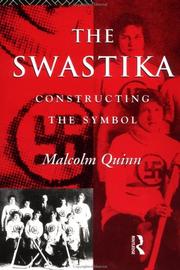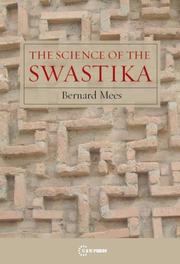| Listing 1 - 2 of 2 |
Sort by
|

ISBN: 1134854951 1280114339 020399387X 9780203993873 9780415100953 041510095X 9781134854905 1134854900 9781134854943 1134854943 9781134854950 041510095X 9780415756334 9781280114335 9786610114337 6610114331 8177559427 Year: 1994 Publisher: London ; New York : Routledge,
Abstract | Keywords | Export | Availability | Bookmark
 Loading...
Loading...Choose an application
- Reference Manager
- EndNote
- RefWorks (Direct export to RefWorks)
Despite the enormous amount of material on the subject of Nazism, there has been no substantial work on its emblem, the swastika. This original and controversial contribution examines the role that the swastika played in the construction of the Aryan myth in the nineteenth century, and its use in Nazi ideology as a symbol of party, nation and race, treating it as symbolic phenomenon in a cultural context. By identifying the swastika as a boundary or liminal image, Malcolm Quinn allies visual analysis to issues of material culture and history.
National socialism. --- Swastikas --- Symbolism (Psychology) --- Symbolism in psychology --- Psychoanalysis --- Psychology --- Fylfots --- Svastikas --- Swastika --- Crosses --- Nazism --- Authoritarianism --- Fascism --- Nazis --- Neo-Nazism --- Totalitarianism --- World War, 1939-1945 --- History. --- Causes

ISBN: 9789639776180 9639776181 9781435665088 1435665082 9786155211577 6155211574 1283248093 9781283248099 Year: 2008 Publisher: New York Central European University Press
Abstract | Keywords | Export | Availability | Bookmark
 Loading...
Loading...Choose an application
- Reference Manager
- EndNote
- RefWorks (Direct export to RefWorks)
The first theoretically informed study of the relationship between an academic discipline and what the Nazis termed their Weltanschauung. The first study of Sinnbildforschung, German ideograph or swastika studies, though more broadly it tells the tale of the development of German antiquarian studies (ancient Germanic history, archaeology, anthropology, folklore, historical linguistics and philology) under the influence of radical right wing politics, and the contemporary construction of 'Germanicness' and its role in Nazi thought. The swastika and similar symbols were employed by the ancestors of the modern day Germans. As these had also become emblematic symbols of the forces of German reaction, Sinnbildforschung became intrinsically connected with the National Socialist regime after 1933 and disappeared along with the Third Reich in 1945.
Swastikas. --- Symbolism (Psychology) --- National socialism. --- Nationalism --- Svastika --- Symbolisme (Psychologie) --- Nazisme --- Nationalisme --- History --- Histoire --- Nazism --- Authoritarianism --- Fascism --- Nazis --- Neo-Nazism --- Totalitarianism --- World War, 1939-1945 --- Symbolism in psychology --- Psychoanalysis --- Psychology --- Fylfots --- Svastikas --- Swastika --- Crosses --- Causes --- 20th century, Germany, History, National socialism, Nationalism, Nazism, Symbols.
| Listing 1 - 2 of 2 |
Sort by
|

 Search
Search Feedback
Feedback About
About Help
Help News
News